Termites, often referred to as “white ants,” are one of the most destructive pests that can infest homes in Australia. These tiny, wood-eating insects can cause extensive damage to the structural integrity of your property if left unchecked. Recognising the signs of a termite infestation early is crucial to preventing costly repairs. We will discuss the top 10 signs of termite infestation in Australian homes, helping you protect your most valuable asset.
Signs of Termite Infestation:
Mud Tubes
- Those sneaky, sly termites build mud tubes to maintain moisture levels and protect themselves from predators while traveling between their nest and a food source.
- These tubes are often found along walls, foundations, or wooden structures and are a clear indicator of termite activity.
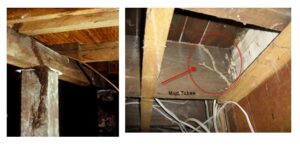
Hollow-Sounding Wood
- When termites infest wooden structures, they consume the wood from the inside out.
- If you tap or knock on infested wood, it may produce a hollow or papery sound due to the tunnels created by the termites.
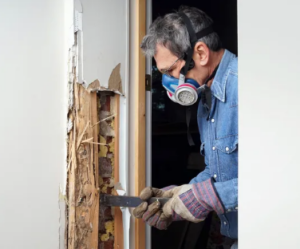
Discarded Wings
- Reproductive termites, often called “swarmers,” shed their wings after finding a suitable mate and a new location for their colony.
- Finding discarded wings near windows, doors, or light sources is a strong indication of termite activity.
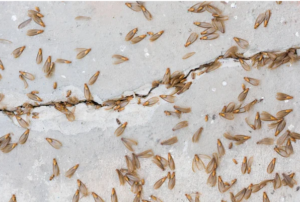
Frass (Termite Droppings)
- Termite droppings, known as frass, look like small wood-colored pellets.
- You might find these piles of frass near infested wood or at the entrance of termite tunnels. It’s essential to distinguish frass from sawdust, as the former is a common sign of a termite infestation.
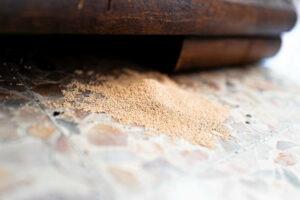
Tunnels in Wood
- Inspect wooden structures, such as beams, joists, or furniture, for the presence of tunnels or galleries created by termites.
- These tunnels are pathways that termites use to access their food source and can be an unmistakable sign of an infestation.
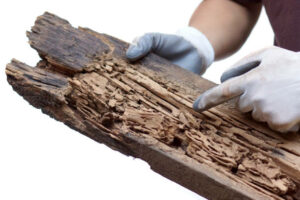
Swarming Termites
- During termite swarming season, you might observe large groups of winged termites emerging from the colony.
- If you witness swarming termites indoors or around your property, it’s a red flag and should prompt immediate action.
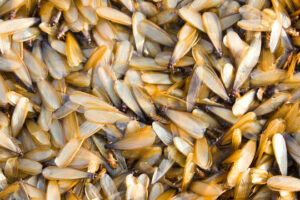
Sagging or Buckling Floors
- Termites can weaken the structural integrity of wooden floors, causing them to sag or buckle.
- If your floors show signs of distortion or seem uneven, termites may be to blame.
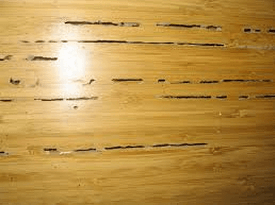
Damaged Furniture
- Termites don’t limit their appetite to structural wood alone; they can also infest wooden furniture.
- Check your wooden furniture for signs of termite damage, such as tunnels or weakened areas.
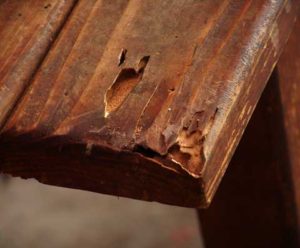
Difficult-to-Open Doors and Windows
- Termites can cause wooden doors and windows to warp or swell, making them challenging to open or close.
- If you notice such difficulties, it could indicate termite damage.
Noises in Walls
- In some cases, you may hear faint clicking or rustling sounds coming from inside walls or wooden structures.
- These noises can be the result of termites moving within their tunnels.
Conclusion:
Detecting termite infestations early is vital to prevent substantial damage to your Australian home. Regular inspections and vigilance are key to identifying the signs of termite activity. If you suspect a termite infestation, it’s essential to contact a professional pest control service promptly. Remember, addressing termite issues swiftly can save you from costly repairs and protect your most significant investment – your home. Resicert is available to provide assistance, so please don’t hesitate to contact us if you have any inquiries.






